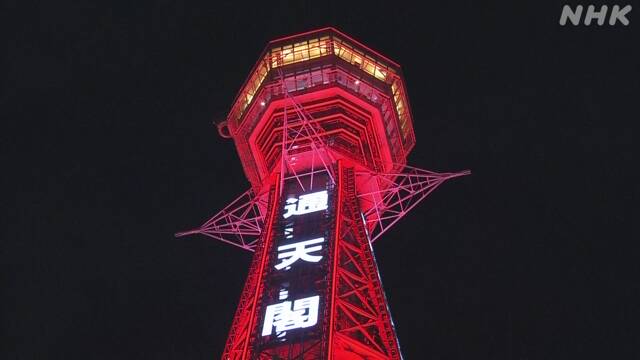In Osaka Prefecture, the number of severely ill patients with the new coronavirus is increasing rapidly, and the red light indicating "emergency" is lit for the first time in the "Osaka model" that was originally established because the medical system is tight. From the day to the 15th of this month, we have decided to call on people to refrain from going out unnecessarily and urgently as much as possible.
It is a state of the city on the first day when the red light lights up.
Voices of confusion over the extension of the year-end and New Year holidays
Along with the lighting of the red light of the Osaka model, the period of the request for shortening the business hours, which was issued to restaurants offering alcoholic beverages in Osaka / Kita Ward and Chuo Ward, has been extended, and from restaurants that are approaching the year-end and New Year holidays. Is confused.
Osaka Prefecture has requested restaurants that serve alcoholic beverages in Kita-ku and Chuo-ku, Osaka, to shorten their business hours to 9 pm from 27th of last month, but due to the lighting of the red light, the request was made. The period has been extended by 4 days from the 11th of this month to the 15th.
At Japanese restaurants in the target area of Minami, Osaka, sales, which had recovered to 80% of the average year, have fallen sharply since the 27th of last month, when business hours were shortened by two hours.
Tatsuya Omori, the owner of "New Asakusa," said, "It's only an extension of four days, but the impact is great. If it ends by the 11th, I think that the atmosphere of the end of the year will come out and it will lead to the beginning of the year, but it will continue as it is. I have to wait for the time to settle. "
Long-term care facility A sense of crisis spreads due to the rapid increase in the number of seriously ill patients
There is a growing sense of crisis at nursing homes in the prefecture about the fact that the red light indicating an "emergency situation" was turned on in the Osaka model.
Osaka Prefecture has not made any special request for the use of nursing care facilities this time, but the number of seriously ill patients is increasing rapidly and the sickbed usage rate is tight, so a sense of crisis is spreading among nursing care facilities.
At the facility in Higashinari Ward, Osaka, a long-term care welfare corporation that operates 66 offices in Osaka Prefecture, day service is provided after taking measures against infection such as installing an acrylic board on the desk to prevent flying eyes. The number of users is limited to about 80% of the normal number.
Due to the increase in the number of infected people, from about 10 days ago, in principle, visits to the elderly who enter the hospital were prohibited.
The facility says that elderly people can prevent cognitive decline by interacting with friends and lead to a sense of purpose in life, and even after the red light comes out, they want to continue to provide day services while thoroughly implementing infection control measures. is.
Masafumi Nagai, president of the social welfare corporation "Keiseikai", said, "The users are elderly people who need long-term care, and many people have underlying illnesses, and once infected, the impact is great. Those who cannot take a bath at home, People who cannot manage nutrition cannot stop going to day service or visiting helpers, so I want to take thorough measures against infection. "
It looks like the supermarket is the same as usual
In the Osaka model, a red light indicating an "emergency situation" was lit, but at the supermarket in Osaka city, it seemed to be the same as usual.
At the supermarket "Konomiya Midoribashi" in Higashinari-ku, Osaka, people who bought groceries and daily necessities visited, and according to the store, the number of customers on the morning of the 4th was about 1200, which is normal.
Some customers buy ingredients for Saturdays and Sundays in bulk, but no one stocks up on well-preserved products such as water and pasta, and the amount of purchase is the same as usual.
In addition to installing disinfectant solutions at the entrances and exits to prevent infections, the store disinfects places that many people touch, such as carts and product packing tables, every two hours.
A 59-year-old shopper said, "I came to shop at the time I was busy. I bought a little bread and daily necessities this weekend so I didn't have to leave the house."
A 71-year-old man said, "I buy a little more frozen food, but I don't plan to stock up on it at the moment. In the future, I'll be flexible depending on the situation."
Deputy store manager Kaoru Nakano said, "It looks like it's usually the same. I want customers to take all possible measures and shop safely."

